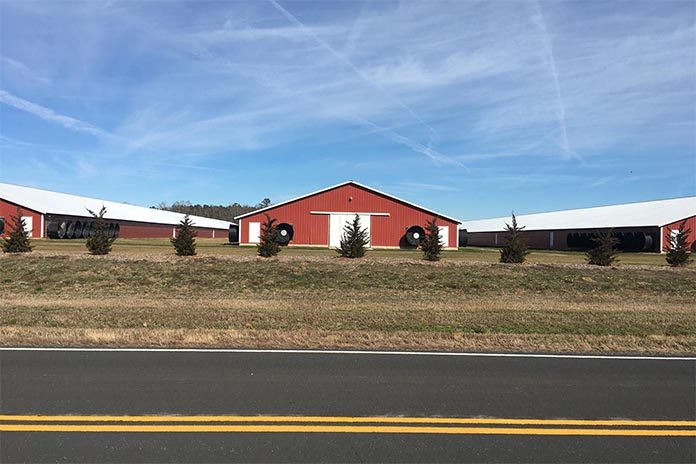
Delmarva’s meat chicken industry processed 4.2 billion pounds of Delmarva-raised chickens in 2017, resulting in a wholesale value of $3.4 billion, according to new data released by Delmarva Poultry Industry, Inc. (DPI). The Delmarva chicken community raised 605 million chickens in 2017, which comes to 2 percent more chickens than it raised in 2016. At the same time, contract payments made to chicken growers by the region’s five chicken companies rose 5 percent in 2017, with 1,549 family farmers earning $256 million in contract income.
“We are heartened to see the chicken industry continues to be one of Delmarva’s economic bright spots“, said Bill Satterfield, executive director of DPI. “The farmers and companies who comprise the chicken community worked hard to achieve a modest rate of year-over-year growth in 2017, producing nutritious, affordable, tasty chicken while doing right by the communities in which we all live.”
Since 1957, DPI has collected and compiled data from the poultry companies operating on Maryland’s Eastern Shore, on the Eastern Shore of Virginia and in Delaware to gauge the scope and growth of Delmarva’s chicken economy. The 2017 data reflect the construction of some new chicken houses around the region, both to accommodate increasing U.S. consumer demand for chicken and to replace outdated houses taken out of production.
There were 5,091 chicken houses in operation on Delmarva at the end of 2017, which is an 8 percent increase over 2016. At the same time, that represents a 12 percent decline from the number of chicken houses that were in operation 20 years ago. An average Delmarva chicken farm operates with 3.2 chicken houses, the data show. The data also show Delmarva’s ‘chicken capacity’ – the total number of birds that can be housed at any one time – has increased only 0.55 percent each year, on average, over the past two decades.
In 2017, DPI has documented, chicken companies and family farmers raising chickens planted more than 8,400 trees and grasses as part of DPI’s vegetative environmental buffers program. DPI encourages chicken growers to plant vegetative environmental buffers on their farms, stressing the economic, water quality, air quality and good neighbor benefits that result. Delmarva’s chicken companies also invested $152 million in capital improvements in 2017, including investments in solar energy, hatcheries and processing plants, and purchased $240 million in packaging and processing supplies in 2017.
DPI’s annual data report also showcases some of the metrics demonstrating the chicken community’s commitment to environmental responsibility. By June 30, 2017, one benchmark goal in Maryland for improving Chesapeake Bay water quality was to transport annually 51,000 tons of poultry litter or livestock manure from farms that don’t need it to farms that can use the manure in accordance with best management practices. Because of chicken growers’ commitment to environmental sustainability, 241,900 tons of manure were transported in 2017 – more than four times the benchmark goal.

















